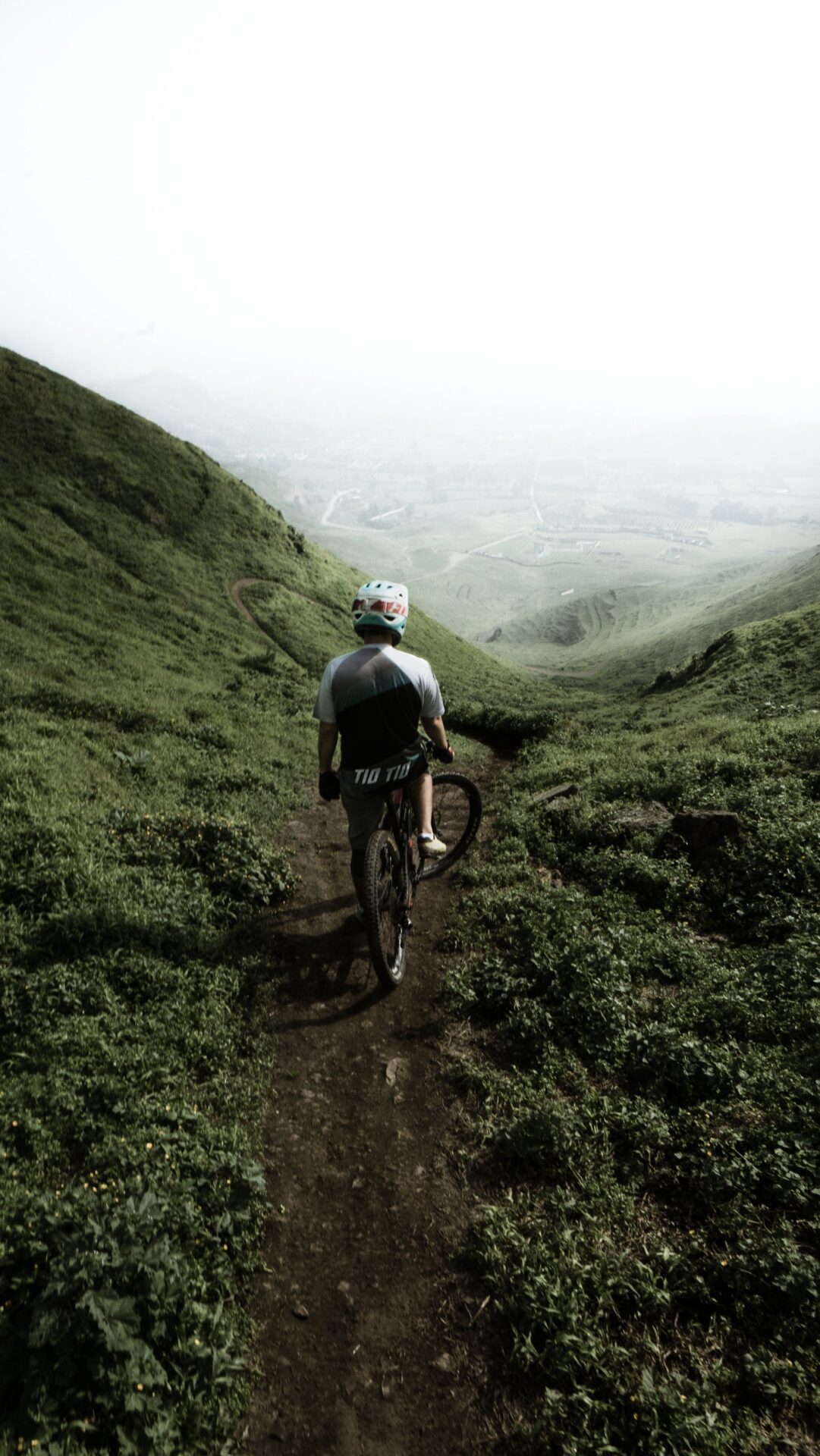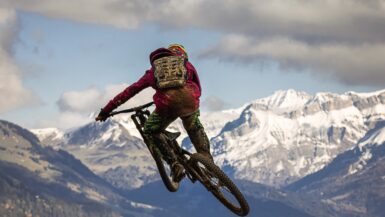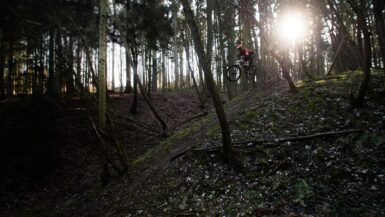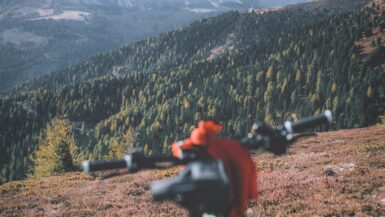Are you an adrenaline junkie looking for an exciting way to spice up your mountain biking adventures? Riding a mountain bike on single-track trails can provide a stimulating and challenging experience that will leave you feeling exhilarated. In this article, you will find all the information you need to know to help you get started on your journey to mastering this type of terrain. Learn how to safely and confidently ride your mountain bike on single-track trails, from what to look for on the tracks to the proper riding techniques.
Preparation and Protective Gear
No matter your skill level, proper preparation, and protective gear are essential when riding a mountain bike on single-track trails. Whether you’re a first-time rider or an experienced pro, these items are necessary for a safe and enjoyable experience.
Bike Tuning and Maintenance
Take the time to make sure your bike is tuned up properly before you hit the trails. Test your brakes, and make sure the chain is lubricated and your gears are shifting correctly. If you have any trouble, it’s best to take the bicycle to a professional bike shop and have them do the repairs.
Clothing and Accessories
Wear durable, comfortable clothing that won’t become too heavy and restrict your movement. Wear helmets, knee and elbow pads, and gloves for extra protection. For sun protection, wear sunglasses, a hat, and sunscreen. Bring plenty of water and a small first-aid kit in case of any medical emergencies.
Trail Navigation and Safety
Always plan your route and adhere to the designated trails. Take a map of the courses and download a navigation application on your phone in case of emergencies. Be aware of wildlife, other riders, and potential hazards if a situation arises while riding, remain in control, and use caution to avoid potential danger.
General Tips
Start with beginner trails and work your way up as you gain more experience. Keep an eye on technical terrain and obstacles, like rocks or roots. Pay attention to your speed, and use the brakes when necessary to maintain a controlled ride. Lastly, take frequent breaks to rest, stay hydrated, and have fun!
Techniques for Riding on Single Track Trails
One of the essential techniques for riding on single-track trails is ensuring your mountain bike is appropriately set up for the terrain. Ensure your tires are adequately inflated for the terrain you’re riding on and that your brakes are working correctly. Adjust your saddle and handlebar height for comfort and proper bike control.
Maintaining and Changing Your Speed
When riding on single-track trails, adjusting your speed as needed is critical. This may involve stopping before turning a corner or speeding up to navigate a downhill or technical section. Make sure to brake well before a corner or obstacle and look ahead to anticipate the terrain.
Navigating Technical Sections
Single-track trails often contain technical sections such as rocks, roots, and sharp turns. For these sections, keeping your weight balanced over your bike is vital. Use your body to move your bike instead of turning your handlebars. Additionally, it is essential to watch out for loose rocks and roots and avoid them.
Leading With Your Eyes
One of the critical techniques for riding on single-track trails is to lead with your eyes. This means you should look ahead to the terrain and anticipate what is coming. This will allow you to plan and make sure that you keep your speed and momentum up. Additionally, it will help you spot any potential obstacles or hazards.
Practice Makes Perfect
Finally, it is vital to practice to become a better rider. Start by riding on easy trails and focus on building skills such as cornering, braking, and navigating technical sections. As you become more comfortable, you can increase the difficulty of the trails you ride. With practice and patience, you will become a better rider and be able to tackle more challenging single-track trails.
Descending Downhill with Control
Mountain biking on single-track trails is an exhilarating experience. Going downhill can be a lot of fun, but it can also be intimidating for inexperienced riders. More than any other part of mountain biking, descending requires practice and skill. Here are some tips for how to ride a mountain bike on single-track trails going downhill.
Choosing the Right Line
The line choice in mountain biking is one of the essential aspects of downhill riding. A good line is a route you take through the terrain that allows you to control your speed and minimize fatigue. Look ahead and pick a bar that is the most direct and efficient route to the bottom but also avoids the most significant obstacles.
Braking and Cornering
Braking and cornering techniques are essential to control your speed when riding on a single-track trail downhill. When approaching a corner, start braking early and use both front and rear brakes. This will help slow you down while still maintaining a good line. When entering a corner, look ahead and lean your bike into the turn. This will help you stay balanced and in control.
Standing and Pumping
The standing and pumping is a technique to maintain your speed on a single-track trail. Standing gives you more control and allows you to use your body weight to help dominate the terrain. To master the technique, practice by pumping the bumps, jumps, and undulations on the trail while trying to maintain momentum. This will help you stay in balance and keep your speed up.
Mindful Momentum
When riding a mountain bike on single-track trails downhill, staying mindful of your momentum is essential. If you find yourself going too fast, slow down with the brakes. As you become more experienced, you can pick and maintain a speed that allows for a smooth, efficient, and safe ride down the trail.
What to Do When You Get Stuck
It can be easy to feel invincible when you’re an experienced mountain biker, but even the most seasoned trail riders can get stuck on single-track trails. Here are some helpful tips on how to get unstuck and continue your ride in no time.
Check Your Tire Pressure
One of the most common causes of getting stuck while mountain biking on single-track trails are having the wrong tire pressure. Check your tire pressure regularly, especially when a new course is coming up. A tire that’s too soft will cause you to sink, and a tire that’s too hard can make you bounce off the trail.
Look for Alternate Routes
If you get stuck in a tricky section, take a few moments to scan your surroundings and look for alternate routes. If there’s a more leisurely route around the spot you’re stuck at, use it to save yourself some trouble.
Adjust Your Seat Height
When you get stuck, one of the first things you should do is check your seat height. If the seat is too low, you won’t be able to maintain your balance or have enough power to get you through the tough spots. Raise it slightly and try again.
Reduce Your Speed
Sometimes, the best thing to do when you get stuck is slow down. Taking it slow will make it easier to anticipate the terrain ahead, which can make all the difference. Reducing speed can also avoid dangerous situations like wiping out or hitting a rock or root.
Stop and Assess the Situation
If you’ve tried all the above tips and still find yourself stuck, it’s time to stop and assess the situation. If you need a break, take it! Take a few moments to catch your breath and think of a plan. Once you’ve gathered your thoughts, you’ll be better positioned to continue your ride.
Know When to Quit
If you’ve tried every possible option and are still stuck, it may be time to call it quits. Always remember that your safety comes first, so if you can’t get yourself out, it’s time to get help or look for a more accessible section of the trail.
Knowing When to Take a Break
Single-track trails are often technical and demanding. When riding your mountain bike, you must become aware of your limitations. If you are slipping and unsteady on the course, it is time to rest and recharge. Take a few deep breaths and assess your current energy levels. If you can no longer focus on the trail and feel too tired to go on, it is time to take a break.
Seeking Out Opportunities to Stop
As you ride on the trail, keep an eye out for potential places to take a break. These can include scenic spots, lookout points, or even shaded areas with a comfortable place to sit. Regularly taking breaks throughout your ride will give you more energy to tackle each section of the trail.
Listening to Your Body’s Cues
It is essential to learn to read the signals your body is sending. If you feel mentally and physically drained after riding a section of the trail, it is a good indication that you should stop and rest. Taking even a few minutes to sit and collect your thoughts can make a difference.
Setting Time Limits for Breaks
If you take too many breaks, set a time limit for each. For example, give yourself no more than 5 or 10 minutes for each gap. This will help you stay focused and reach your destination faster.
Getting Back on the Trail
When you are ready to continue your ride, make sure you take some time to stretch your legs and hydrate. Refuel with a snack or some energy drinks to help keep you going. Taking the time to recover regularly will ensure you enjoy your ride on the single-track trails.
Gain Confidence and Conquer the Trails!
Learning to mountain bike on single-track trails can be intimidating for novice riders; however, with the proper safety steps and the correct technique, it’s entirely possible to become an experienced mountain biker. By implementing safety guidelines, such as wearing a helmet and being aware of their surroundings, riders can gain the confidence they need to take on the trails. As riders become more experienced, they can implement more advanced riding techniques, such as cornering, making them more effective. With a bit of patience and practice, riders will soon be able to confidently and safely ride the trails with ease.






Leave a reply